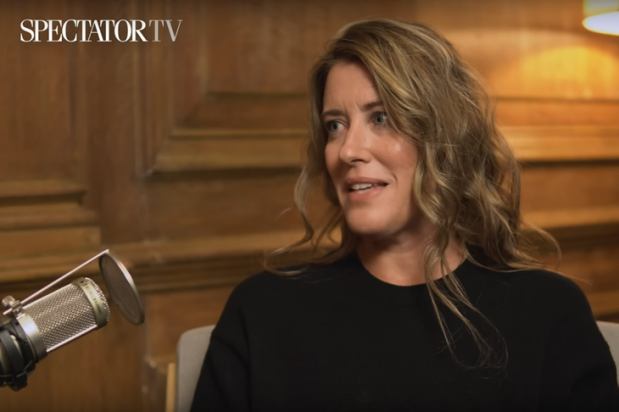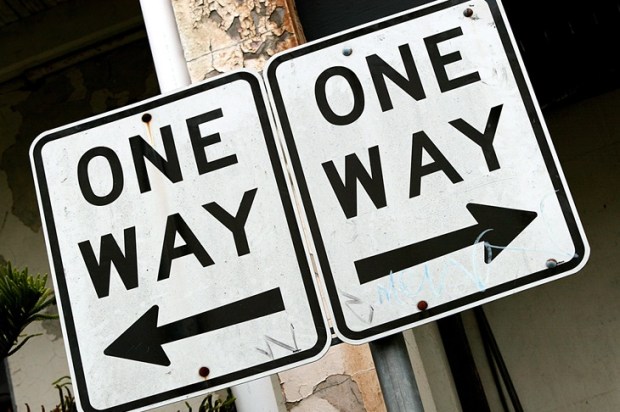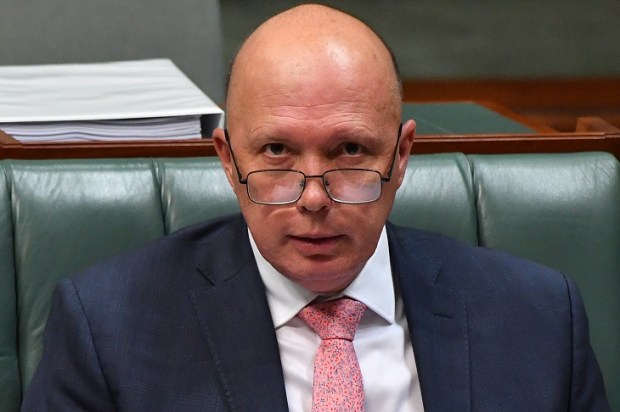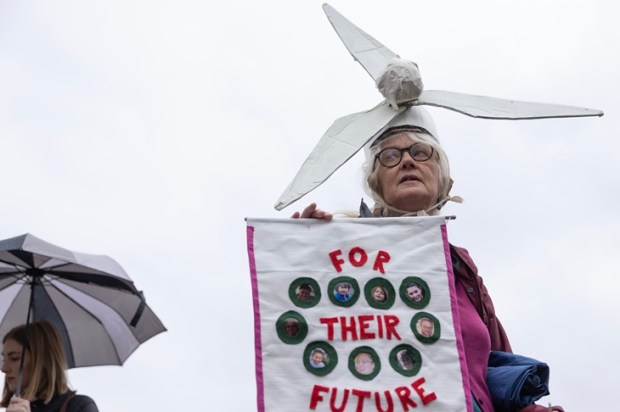My attention is repeatedly and reluctantly draw to the ongoing focus of the ABC to rid women of traditional and religious ideology and their noble fight against the scourges of patriarchy, white supremacy, and gender inequity. The latest headline I failed to ignore read “For some, being a tradwife is about more time with family. For others, it’s a dangerous far-right ideology.” A “tradwife” is a woman who takes pride in being a traditional housewife.
The piece reads like your standard ABC fare, a few Instagram posts with very few likes, some anecdotal stories, a university expert on “extremism” and a link to a NYT article entitled “The Housewives of White Supremacy” The story ends with a warning against “denouncing all tradwives”. Here I was thinking that we don’t “denounce” women at all in Australia for their lifestyle choices.
In 2017 the ABC published a piece by Julia Baird and Hayley Gleeson titled “Submit to your husbands: Women told to endure domestic violence in the name of God”. The byline was “Research shows that the men most likely to abuse their wives are evangelical Christians who attend church sporadically”. The basis of the thesis was American research conducted by the theologian Steven Tracey, on an American cohort.
The research purported to show, bizarrely in my view (and that of many other commentators), that evangelicals who attended church sporadically were more likely to commit domestic violence, while regular attendance reduced incidences of violence. The latter finding was left out of the article. It seemed like a strange kind of investigative journalism for our national broadcaster.
Baird, has now gone on to claim in a recent article that it is not just evangelicals but Anglicans who are also especially violent among Australian men. This is based on recent study conducted by the church itself. Professor Naomi Priest, a social epidemiologist at the Australian National University is brought in by Baird to comment on the problem with domestic violence in the church. An epidemiologist is a disease specialist, so one can surmise that a social epidemiologist is a person who specialises in disease within society.
Priest is a fitting name for such a person because this is the new cultural priesthood seeking out sin and disease in culture. The gender Priest claims that the church should not focus on domestic violence as an individual aberration or sin — [such as] narcissistic personality or alcohol abuse — rather … systemic cultural issues in churches related to gender equality”. We mustn’t focus on the behaviour of men, according to the gender priest, nor must we discuss alcoholism or coercive control. Instead, the gender belief system is what must be targeted.
Although neither of the church studies seem to show a that women in church cohorts are specifically at high risk to male violence among Australian women, Baird considers it is “critical” to recognise that teaching and cultures in the churches are “drivers of domestic abuse”. The crux of contention is that there is a “general agreement” about the link between gender inequality and Intimate Partner Violence. One of the sources linked, from the Australian Centre for the Study of Sexual Assault, says that “violence against women is understood to be a manifestation of historically unequal power relations between men and women”.
To get definitions out of the way, “gender” is the word we use for the cultural meanings and stereotypes that societies attach to the two sexes (which are male and female in case we need a refresher). Sex is biology, gender is cultural. Although there is a general idea that sex and gender are interchangeable, this has only been the case in the vernacular. Universities and government bodies have long made the distinction in the terms.
In the early ’90s when I wrote my own thesis in cultural studies, women’s studies was turning into gender studies, and this didn’t happen organically. Universities such as my own, were “corporatising” and the humanities were feeling pressure to become “vocational”. My own honours thesis was titled “Policing Culture” and argued that culture could be managed in populations by government through cultural policy, as was the prevailing academic trend.
In 1992 geographer Linda McDowell, noted that there was a “shift of emphasis in feminist scholarship away from women towards gender” that led to a greatly expanded interest in what used to be women’s studies. In 1993 the UN redefined violence against women as “any act of gender-based violence that results in, or is likely to result in, physical, sexual or psychological harm or suffering to women”. And the pouring of money into gender studies began.
To catch up, I read a volume of the literature referenced by the ABC to substantiate the link between gender inequity and IPV. It seems, that somewhere in the last fifteen years there began a testing of the thesis that gender was a “driver” of IPV. To me, it looks less like a “testing” and more like a mission, with an astounding amount of interest from intergovernmental bodies.
What surprised me the most in looking at the research, particularly in the last ten years, is that the focus on gender has become so absolute, that there is almost ubiquitous blindness in the study of women’s vulnerability to violence to crushing poverty, biological sex and the importance of protective infrastructure. Also, the bias in western standpoint is almost singularly ignored in cross-cultural analyses, except where it is used to downplay glaring contradictions to the central simplistic thesis that gender inequity, more than anything else, drives violence against women.
Just by the volume of the research funded and published by intergovernmental organisations like the World Bank, the UN and the WHO, there appears to have been billions of dollars focused on proving and advancing the gender equity thesis. The UN fund for Gender Equity released US 65 Million in ten years for goals that sound almost entirely like nonsense, even to someone like me with a humanities degree. One of the nonsense outcome aims are “addressing social norms to advance gender equality.” The women’s revolution was not squashed by government, it has been purchased in instalments.
One of the main sources that Baird uses is a Lancet article. Here, there is a general correlation observed between high GDP and low IPV. But the article rejects outright a causal relationship between prosperity and lower IPV, claiming that more equitable gender can sometimes “naturally emerge” with wealth.
We know that equitable gender does not always “naturally emerge” from wealth, because of countries like Saudi Arabia. A very simplistic gender-based analysis could conclude that in Saudi Arabia, “gender inequity” is the reason that women are not able to remove their bodies from risks of violence. But the problem, in my view, is that in Saudi Arabia and other Muslim countries, gender is placed in the driver’s seat by religious governments.
Gender equity didn’t “naturally emerge” in the west. Gender change was forged by grassroots sex-based resistance movements that deliberately pushed gender out of the driver’s seat and relegated it to an annoying backseat driver that we almost got under control. Sexual protection infrastructure in the west has been built over hundreds of years by the advocacy of women.
English social reformer and feminist Josephine Butler (1828-1906), focused on raising the age of consent, stopping surgical rape, and challenging ”men’s right to sexual access to prostituted women and children”. It was a primary focus on sex with a secondary focus on gender.
Butler said that the “degradation of these poor unhappy women is not degradation for them alone; it is a blow to the dignity of every virtuous woman too.” Here Butler reshapes the gender definition of a “virtuous women” into one that does not stand by and watch the sexual degradation of women and girls. I wonder if we could find funding for research into the relationship between sex-based protections and the emergence of more equitable gender?
Looking at cross-country research that is linked in the references the ABC uses, it is convincingly established that countries with more equitable attitudes towards women generally but not always, have lower rates of domestic violence, however that gender inequity is the driver is not demonstrated.
One astounding study across Asian nations, funded by the UN, indicated that over 59% of men from PNG (Bougainville) said they had been the perpetrator of a rape. This is not just “gender inequity”, because cultures with complete male domination do not all have these kinds of statistics. We can only conclude that this is a rape culture, “a society or environment whose prevailing social attitudes have the effect of normalizing or trivializing sexual assault and abuse.” Rape culture can only emerge where women’s sexual boundaries are ignored in culture and sexual protection systems are not provided for women. The power of sexual consent lies at the heart of the way western women were some of the first in history to put gender in the passenger seat. And we almost got away with it.
By sexual boundaries I mean, practical measures like Josephine Butler fought for and things like the criminalisation of rape in marriage, women’s shelters, the ability to earn a living wage, and state enforcement of rights of consent. When men are separated from the right of access to women’s bodies, males seem to adjust their social behaviour to gain access to women’s “graces”, even to the point of expressing attitudes they do not hold. As we see in the phenomenon of the male feminist.
The use of gender as a dominant form of analysis in feminism, and its use as a primary research component in domestic violence prevention, has led to domestic violence prevention strategies being divided into two categories “primary” and “secondary” intervention. Primary is focused on reducing “gender inequality” and secondary are the types of intervention that separate female bodies from the risk of male physical and sexual violence.
According to our ABC, Primary Prevention funding is critical in keeping women in the regions safe, and domestic violence services are “crying out” for this funding to combat the “underlying drivers of domestic violence”. I turned to Australia’s most progressive government (Victoria) to examine the “Research and Approaches to Primary Prevention.” Here I found that; “research in the last decade has found that at the population level the two most significant determinants are the unequal distribution of power and resources between men and women and an adherence to rigidly defined gender roles”
Again, I went through the linked research. Again, I found it littered with sources by the UN, WHO, and the Victorian Government itself, but I also found a startling admission. That “Primary Prevention”, that strategy that seeks to take more and more of the funding to keep women safe, is entirely experimental. “The primary prevention of violence against women is a relatively new area of practice in Victoria (and elsewhere in the world), with innovation characteristic of the field. As a result, high-quality impact evaluations are rare, but there is a strong body of promising and emerging practice (Our Watch 2014b; Webster & Flood 2015).
The two sources that are mentioned as proof of the effectiveness of the “emerging practice” are more of the same. The author of one is “Our Watch” a registered charity in Victoria that declared over AUD10M income last year, the gross majority coming from the government. The material they publish is more of the same heavily internationally influenced gender-focused “feminism”. The other reference from Webster and Flood is similar. The insistence that gender inequity is a driver, followed by the lack of evidence and scant justification for the hypothesis.
Dr Michael Floods research is most revealing. There is a snivelling apologetics in the work for the inconsistencies in the underlying thesis. He acknowledges that “some societies that are relatively gender equal, such as some of the Nordic countries, still have high rates of violence against women. This may be the result of increased disclosure of violence in surveys”. Still, it calls for shameless and authoritarian intervention into “everyday interaction, sexual behaviour, child rearing practices.”
Flood’s article has at least 22 references from the World Bank, The World Health Organization, The World Economic Forum, and the United Nations. Dr Flood identifies as a feminist but he also describes the current conflict in women’s rights as “tensions between trans women’s rights and the rights of other women.” By “other women” of course he means women. This is a top-down ideology –and this is not feminism.
After 30 years and massive amounts of money into gender-based feminist research, we have seen the erosion of women as a category and women’s sexual boundaries. In Australia women now have no usable legal definition of “women” with which to describe themselves and advocate for themselves. The Tasmanian Anti-Discrimination Commission has found that women no longer have the right to discriminate between “types of bodies”, the entire basis for single-sex safeguarding.
The removal of consent from women to create, police and maintain their own spaces is part of the placing of gender beliefs in state power. It is institutional rape culture, and the final step in the corporatisation of the original women’s movement that contended with the state for rights and protections on the basis of material sex and economic class.
There is not a problem that now exists that won’t be found to have a primary cause in the deep-seated bias of the western workforce and that can’t be fixed by the adjustment of human capital resources. There is not a solution that won’t involve looking to the new priesthood to find cultural “systems” of inequity within ourselves. Accordingly, we are told to abandon our right to religion, our belief in biology and our own culture and conscience, to allow the state and internationally funded capital to give us more appropriate values and safer identities.
In reality, Intimate Partner Violence is not gender-based, it is sex-based. Violence against women prospers everywhere that women don’t have adequate sex-based protections, where sex-based consent is removed by legal and cultural beliefs (gender), and where gender beliefs are placed in the state power.
My greatest objection to being fed gender-based feminism by the ABC is that they are taxpayer-funded. To use the language of the left, the systems of gender ideology need to be dismantled. The ABC and anyone advocating “primary prevention” needs to be systematically and strategically starved of their funding, and we must return funding to the sex-based needs of women and girls.
One question to our Prime Minister. Mr Morrison, could you please fund a study to examine the thesis that sex-based protective infrastructure is a main driver of gender equity? And if we find it to be so, could we return funding for violence against women to a sex-based model please? Also, our word, will be needing that back as well. Kind Regards, etc.
Edie Wyatt has a BA Hons from the Institute of Cultural Policy Studies and writes on culture, politics and feminism. She tweets at @MsEdieWyatt and blogs at ediewyatt.com. An earlier version of this piece appeared on Substack at Savage Minds.
Got something to add? Join the discussion and comment below.
Get 10 issues for just $10
Subscribe to The Spectator Australia today for the next 10 magazine issues, plus full online access, for just $10.

























Comments
Don't miss out
Join the conversation with other Spectator Australia readers. Subscribe to leave a comment.
SUBSCRIBEAlready a subscriber? Log in